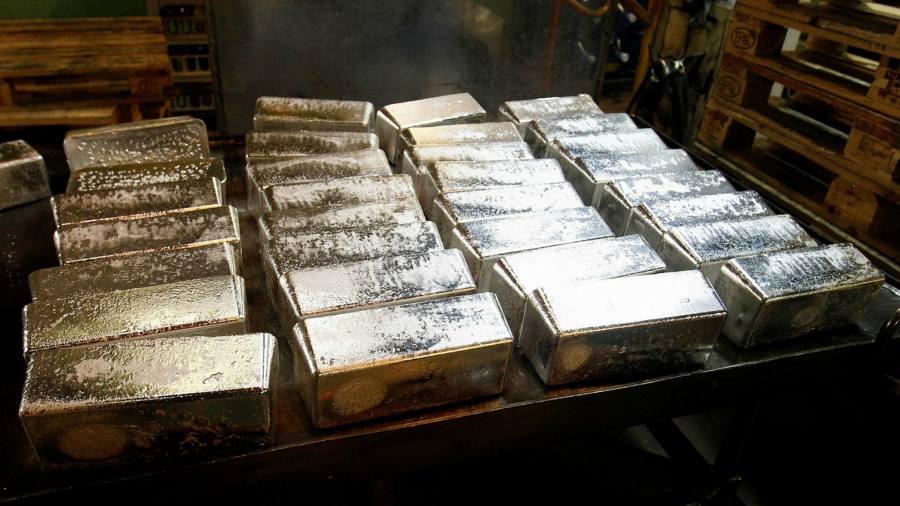Last weekend everyone slightly wished they owned silver. The social media-driven investors who so upset the market with their short squeeze on GameStop spent Saturday and Sunday chatting about doing the same to the metal — which obligingly rose 7.7 per cent on Monday alone.
The excitement has died down since the r/WallStreetBets Reddit chatroom has dropped out of the headlines. But while you need never think of GameStop again, you should definitely keep thinking about silver.
Why? Because it is likely to play a core role in the next commodity super cycle. You don’t get proper long bull markets in industrial commodities very often: over the past 227 years, says Saxo Bank, there have only been six. But when you do they are all driven by the same easy-to-see-in-hindsight dynamics. A glut of supply drives down prices. Producers go on strike — they stop exploring and innovating. Supply falls behind demand. Stockpiles run down and prices rise.
It’s as simple as that. The key thing for investors to note is that once events are under way the price rises tend to go on for some time due to the fact that it takes well over five years to get a new mine up and running.
So where are we in the cycle now? At the beginning of the good bit (from an investor point of view at least.). The big metal miners effectively went on investment strike in 2014 — stopping almost all expansionary spending with the result that a large number of industrial metals were already in short supply even as we went into the pandemic last year.
That shortage of supply is soon to hit a new wave of demand. In the short term there is the pent-up demand that will be released as we leap out of lockdown and on to the road. Note that the US has effectively been providing a highish minimum income for everyone for a year (there is likely another $2,000 per person on the way) — and that money will find its way into the real economy pretty quickly.
But there is more to the new demand dynamic than that. In the post-Covid-19 era, it appears that no one will worry much about fiscal prudence. Instead, there is every chance that the fashion for the government to fill individuals’ pockets will continue; that the endless promises of green transformation and infrastructure revolution will come good; and, crucially, that governments will prioritise high levels of employment over low levels of inflation. Think of the volume of cash that will spray around economies, and perhaps we are moving into something of a “Keynesian golden age” says Gavekal Research.
All this is wonderful for industrial metals and particularly wonderful for any materials that are at the core of green transformation. There is, for example, no replacement for copper in electrification. The more you think green, the more you need brown metal.
Meanwhile, just because most of the discussion around infrastructure is about clean energy doesn’t mean oil won’t be dancing at the super cycle party. Sure, prices briefly went negative last year and even now the coast of Shetland is littered with unwanted tankers. But we will be reliant on fossil fuels for decades to come — there is no getting out of it — and so could be curtailing supply too early in the game. To those that argue that after so long of lockdown our behavioural changes will have become so ingrained we will travel to our offices less and take fewer holidays than we have in the past, all I can say is check out cruise bookings. Carnival says bookings for 2022 are already outpacing those for 2019.
Twice weekly newsletter

Energy is the world’s indispensable business and Energy Source is its newsletter. Every Tuesday and Thursday, direct to your inbox, Energy Source brings you essential news, forward-thinking analysis and insider intelligence. Sign up here.
Add it all up, says Saxo, and this is to be the year in which “the narrative of a greener government supported transformation of the social paradigm meets the reality of too little supply, inadequate infrastructure and a business world that has been so busy getting digital it forgot the physical world”. Great products don’t just need to be hailed on social media, they need to be produced, shipped and delivered. That needs real-world commodities. The new bull started last year — the Bloomberg Commodity Index rose by 10 per cent in the last quarter of 2020 — but 2021 could be the year it really gets going.
So how do you invest? The first thing to note is that if you are an index investor in the UK you are fairly exposed to miners and oil companies already: this is one reason why the UK market has been underperforming.
There are a variety of good low-cost exchange traded funds. For gold, there is iShares Physical Gold, for example, and for silver iShares Silver Trust ETF — the one the Reddit group focused on! Otherwise, for a gold and silver fund look at Merian Gold and Silver Fund.
I pushed its manager Ned Naylor-Leyland, head of gold and silver at the Jupiter funds group, to name his favourite silver stock last week. He was very clear that you absolutely must not own only one silver stock: this is a high-risk sector in which diversification is absolutely vital. But for his biggest silver holding he’d choose Pan American Silver, the Canadian miner, because of its scale, good management and growth pipeline.
On copper, a nice UK-listed smaller miner is Atalaya, which owns an ex-Rio Tinto mine in Andalucía. It is, says Amati’s Dr Paul Jourdan, well run and has lots of room to explore around its active workings.
If you prefer a larger single mining stock, perhaps consider Rio Tinto — which Charles Plowden, manager of the Monks Investment Trust (usually known for its tech bias) has been adding to his portfolio. He expects profits and cash flows to be very strong during a 7-10-year long tight supply situation.
Rio, he says, will “make out like a bandit”. Investment trust investors might also look to BlackRock World Mining or to one of two smaller trusts. The BlackRock Energy and Resource Income investment trust and CQS Natural Resources Growth and Income Plc are both small and reasonably expensive (ongoing charges of 1.4 per cent and 1.8 per cent respectively) but trade on discounts to their net asset value of 8 per cent and 14 per cent, and pay 4 per cent plus dividends. Better still, the WallStreetBets crowd hasn’t heard of them yet.
Merryn Somerset Webb is editor-in-chief of MoneyWeek. Views are personal. [email protected]. Twitter: @MerrynSW
This article is auto-generated by Algorithm Source: www.ft.com


